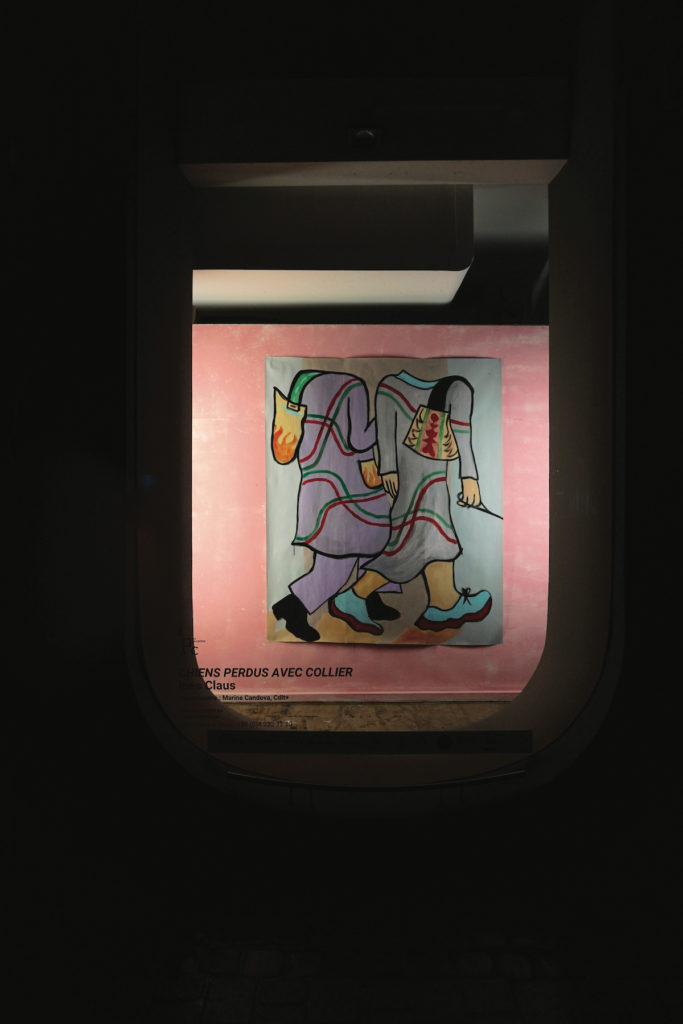-
The price is worth it
Acher
Boulevard d'Avroy 28-30
-
TO DO
Hilal Aydoğdu
100 Rue Saint-Gilles
-
V – 150360/1 p. 204, 265, 266
Dóra Benyó
1 Féronstrée
-
Fausse bonne nouvelle
Juan d’Oultremont
31b Rue de la Cathédrale
-
Et fouisse toujours on trouvera bien
Gaspard Husson
18 Rue de l'Etuve
-
La constellation du navire Argo
Sarah Illouz & Marius Escande
Hôtel de la Cour de Londres 40 Rue Hors-Château
-
One Line (… Better Than On – line!)
Marin Kasimir
31a Rue de la Cathédrale
-
Cityscape
Sarah Lauwers
29 Rue de l'Université
-
Traversées
Alexiane Le Roy
3 Rue de la Cathédrale
-
Mécanique d’un mur
Raphaël Maman
9 Passage Lemonnier
-
Vapeurs
Eva Mancuso
5 Rue Chéravoie
-
Don’t cry over spilllllled tears anymore
Francisca Markus
7 Rue Saint-Remy
-
Actions !
Maxence Mathieu
56 Rue Saint-Gilles
-
On ne peut rien faire d’autre que tenir debout
Élodie Merland
113 Rue de la Cathédrale
-
Travel Local, Buy Local
Oya
107 Féronstrée
-
Le vestiaire
Camille Peyré
85 Rue de la Cathédrale
-
22 empans et 1 palme
Leïla Pile
75 Rue Hors-Château
-
Chronique florale
Ionut Popa
101 Féronstrée
-
The Sunken Place
Louise Rauschenbach
4 Rue de la Cathédrale
-
Le temps d’une trace / La trace du temps
Florian Schaff Marvyn Brusson
1 Rue Courtois
-
Open closet archive 1995/2021/2023/2024
Bo Stokkermans
Passage Lemonnier, 37-39
-
Mutations x Urbaines
Adrien Mans Benjamin Ooms
17 Rue des Croisiers
-
Je m’organise…
Leen Vandierendonck
159 Féronstrée
-
Wer rettet die Welt
Paul Waak
16 Rue du Palais
-
Regarde… ce qu’il se passe à côté
Sculpture/Peinture B3 ESA Liège Melissa Andreia Alves ...
137-139 Féronstrée
-
Pauvre petit belge qui tremble
Paolo Gasparotto
25 Rue Saint Paul
Warning: Undefined array key "current_expo" in /var/www/clients/client3/web4/web/wp-content/themes/artaucentre/loop/vitrine.php on line 25

Chiens perdus avec collier
#3
Ines Claus
Curator : Marine Candova
441 Rue Saint Paul
A woman dressed in a two-tone suit walks surrounded by red ornaments and accompanied by a dog from a painting of another era. A dog hides under a clover tablecloth while its collar hangs over its head. The Poivre et sel take a stroll. Friezes tangle swirling collars, now where did the pet go ?
From an approach that has the stroke of something drawn on paper, Ines Claus seems to come to meet us to talk to us with her words clothed with objects. From the nearly painted poster, from edition to installation, she shows the importation of a common dream, of a culture contrasted by the cheap’n’chic. The artist collects books, beautiful images that inspire her to use logical presentation supports.
Her approach extracts an element and/or an attitude captured from reality to bring it back to a simple evidence. A chromatic flat tint, a collage, this interconnection study seeks an object-based aphorism that Ines Claus subtracts from a fascination for visual languages peculiar to advertising, furniture designing and fashion. Like so, the quintessence of Gucci that represents the form of an elite, here coveted by a substance namely the people, creates a pattern close to pop culture that marches in front of it. The object of desire then takes an attitude, it becomes a character, a near animism, and hybrids itself into an aesthetics proper to the way the artist reads her environment. A dog, then its collar that forms something other than its original utility, a pair of shoes with a weird detail, simplified by the pictorial technique of the artist, become an axiom, expressing a nearly Californian dandyism within a popular Belgium. These social symbols then unify to form a narrative material that changes the common sense of what we are used to seeing and that loads her work with a true reading of our behaviors and our social and cultural perspectives.